Don’t misunderstand me, I’m not talking about your neighborhood Walgreens here (although we did need to stop at the one on Decatur for some supplies during our trip). The former home and business of the first registered pharmacist in the United States is now the site of the New Orleans Pharmacy Museum. While I had a certain professional interest in visiting, I can say that I’d think everyone would find at least some of the history of medicine and pharmacy to be enlightening.
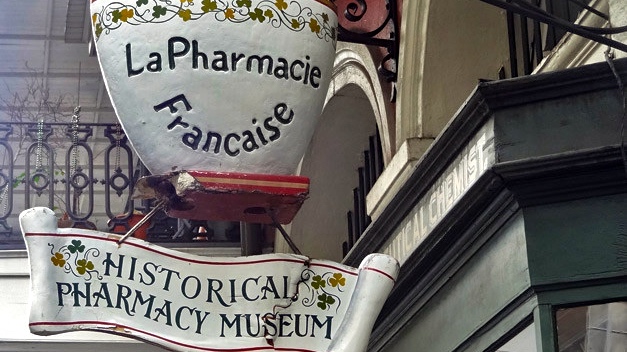
New Orleans Pharmacy Museum
514 Chartres Street
New Orleans, LA 70130
Phone: (504) 565-8027
Listed on the National Register of Historic Places, the Pharmacy Museum is open on Tuesday – Saturday from 10 AM – 4 PM.
Admission prices are as follows:
$5.00/adults
$4.00/students & seniors
Free/children under six
On Tuesday thru Friday at 1PM, the museum offers a guided tour at no additional cost. Since we were visiting on a weekday, we made sure to be at the museum before the 1PM time for the guided tour. We paid the admission charge and since we were so early, we were told we could leave and return a few minutes before 1PM. So since it’s New Orleans, we went around the corner to the Napoleon House and had a drink at the bar.
Walking back to the museum a few minutes before 1PM, we met up with the rest of our tour group. In all, I guess there were maybe 20 people in our group, many of them from outside the U.S.
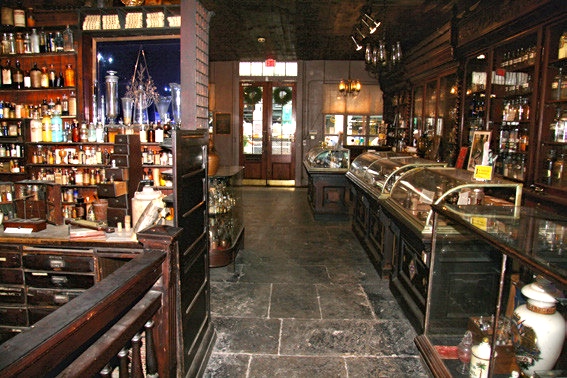
The first floor of the museum inhabits the former storefront of Louis J. Dufilho, Jr. America’s first licensed pharmacist. Here’s the textbook history of Mr. Dufihlo from the museum’s website:
Dufilho’s most significant contribution to the history and integrity of the field of pharmacy took place in New Orleans in 1816. In 1804, the State of Louisiana, led by Governor Claiborne, passed a law that required a licensing examination for pharmacists wishing to practice their profession.
Prior to this law and before Louisiana became a U.S. State, there was some informal territory licensing measures, but none were enforced. A person could apprentice for six months and then compound and sell his or her own concoctions without any regulations or standards. The public received incorrect doses and erroneous medications. In 1804, Governor Claiborne established a board of reputable pharmacists and physicians to administer a three-hour oral examination given at the Cabildo in Jackson Square.
Louis J. Dufilho, Jr. was the first to pass the licensing examination, therefore making his pharmacy the first United States apothecary shop to be conducted on the basis of proven adequacy.
License #001 is still hanging on the wall of the museum.
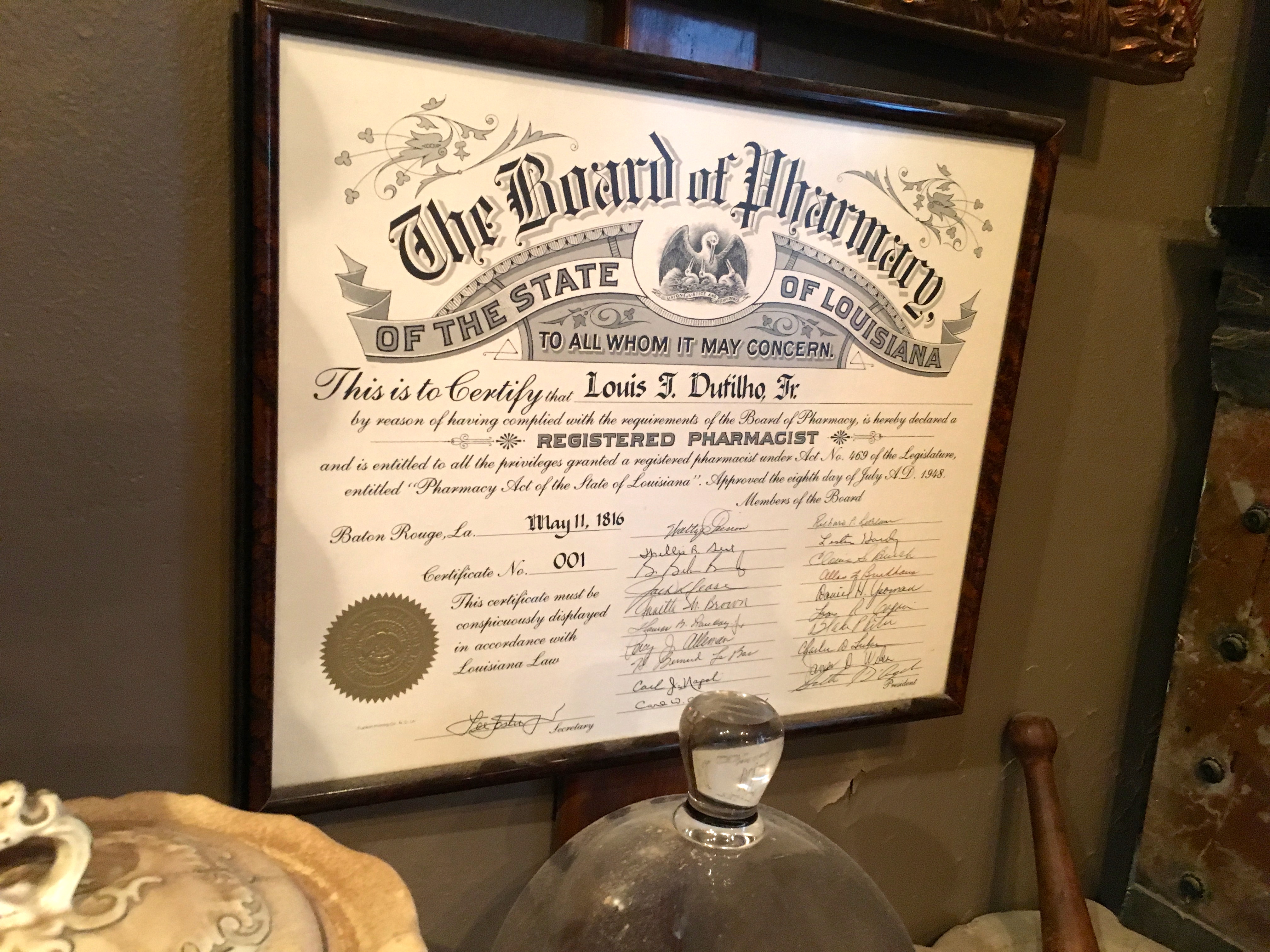
As part of the tour, we also were told the reason behind the law and the regulation of the practice of pharmacy in Louisiana. New Orleans was a city of immigrants and every culture had their own practice of medicine, be it from the Caribbean, Africa. Europe or elsewhere. Besides the doctors and pharmacists, so-called Witch Doctors and Voodoo practitioners were providing remedies to the local population so by regulating pharmacy to a European standard, the government could force these other practitioners out of business (or at least force them to go underground). Not a very glamorous explanation, is it?
We were also shown the windows of the shop that housed decorative glass bottles. While these indicated the profession of the shopkeeper, we also found out they were an important public health device in the 1800s. Back when many people couldn’t read, the pharmacy could fill these decanters with colored fluids. If they were colored red, the locals would know there was an epidemic in the area, such as the flu, and try to exhibit whatever precautions were available to them.
Our tour took us from case to case, showing us different medical and surgical devices from centuries ago. I don’t know about you, but I’d have to be in pretty bad shape to get an injection from one of these syringes.
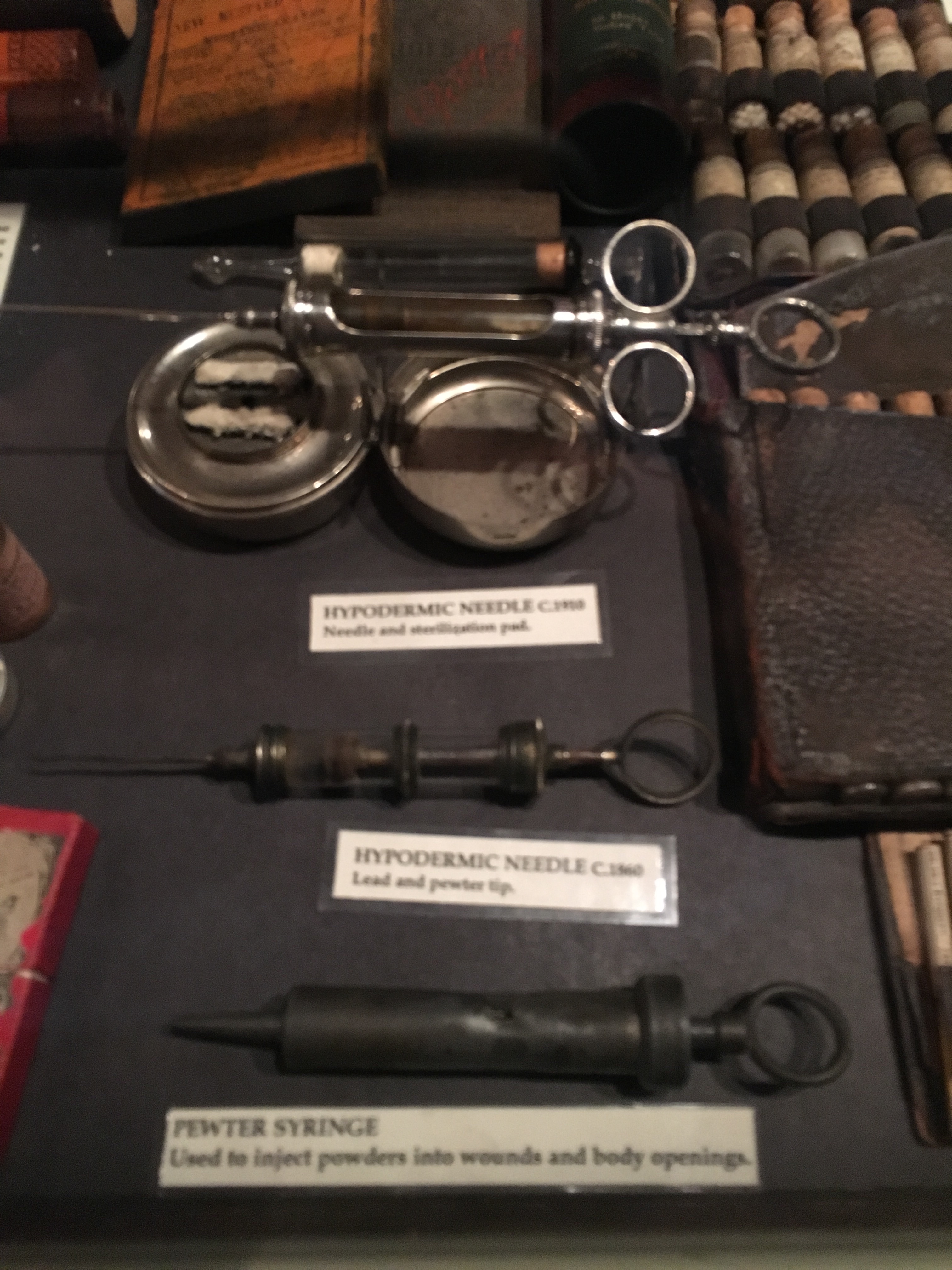
Many of the bottles on display were not from the original shop but were from other pharmacy locations. Many of the ingredients in the bottles were original from the 1800s and 1900s. Apparently, they had a huge thing for sulfur back then.
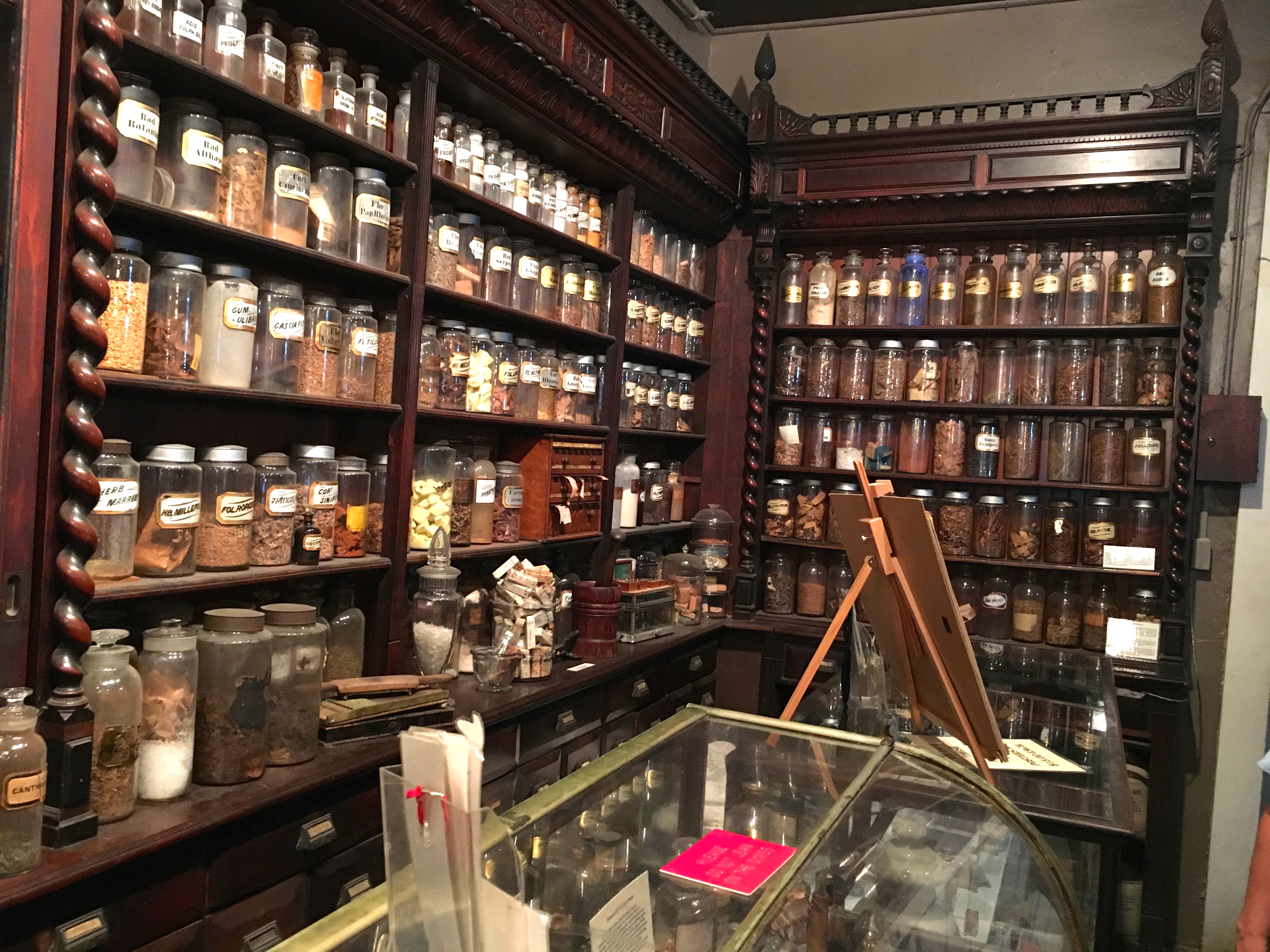
The room wasn’t that big but the display cases were stocked full of interesting items. Each one of them could be talked about for a while, learning the history and the evolution of medical techniques over the decades. When our tour, which took about an hour, ended, we were invited to visit the rest of the museum, which was upstairs.
This was more of a typical museum with displays and stories behind the items. I found interesting the story behind Lydia Pinkham’s remedy, an item that’s still for sale today.
There was also a display on the use of alcohol as a medicinal tonic. Botanical products such as Wormwood (the base of Absinthe), medicinal bitters or Vin Mariani (a popular drink that dissolved the plant base of cocaine into wine) were placed into their historical context and shown how, at one time, all these items were suggested and consumed regularly as a cure to what ails you.
While the museum is definitely more interesting to anyone who has a medical background, or who’s interested in such topics, there’s enough here to interest almost anyone who wants to learn about the history of the practice of medicine. Being able to get the tour of the bottom floor definitely provided a context to the displays and put a story behind many of the items. Either way, it’s worth the $5 they charge for admission.
I did ask the guide about the leeches container on display and if they ever kept leeches in the museum. He told me that they did up until several years ago when they were forced to stop since now using leeches for medicinal purposes is a recognized treatment for certain skin injuries and the cost of keeping medical grade leeches on site was more than the museum could pay (and now you know the rest of the story).
On top of its historical value, the museum is also available for rent as an event space because of its amazing courtyard behind the house. Chalk that up to one of the many hidden secrets behind every turn in the French Quarter.
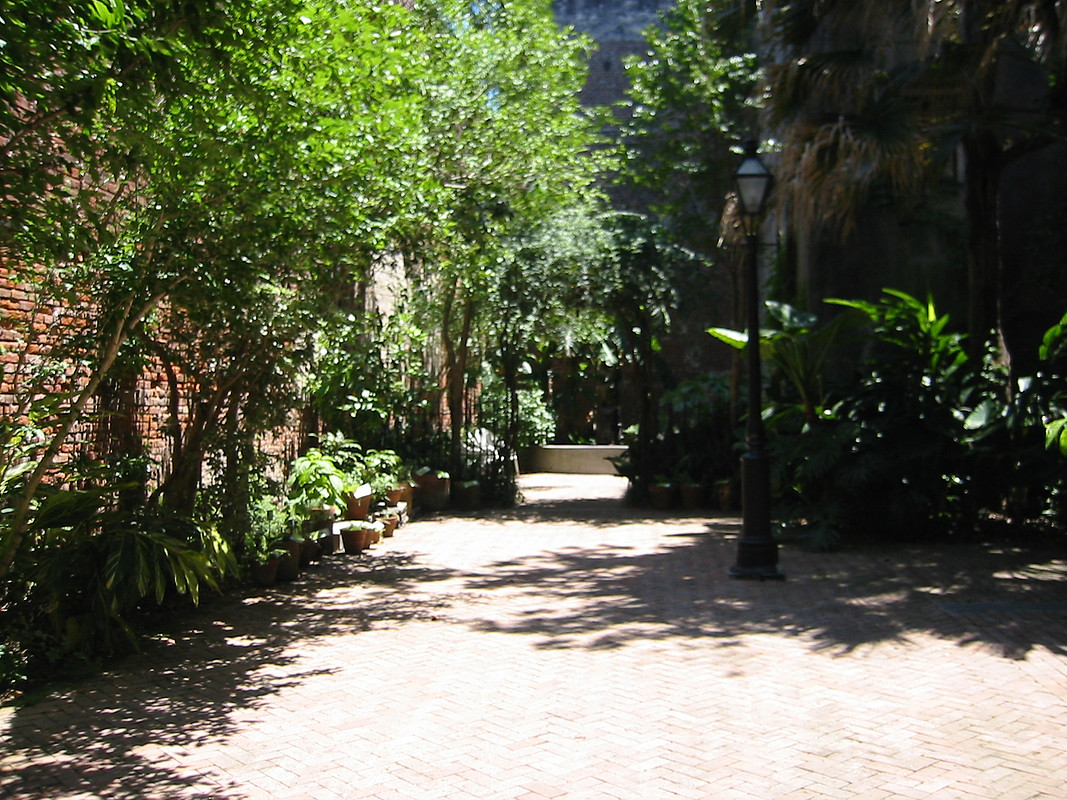
Like this post? Please share it! We have plenty more just like it and would love if you decided to hang around and clicked the button on the top (if you’re on your computer) or the bottom (if you’re on your phone/tablet) of this page to follow our blog and get emailed notifications of when we post (it’s usually just two or three times a day). Or maybe you’d like to join our Facebook group, where we talk and ask questions about travel (including Disney parks), creative ways to earn frequent flyer miles and hotel points, how to save money on or for your trips, get access to travel articles you may not see otherwise, etc. Whether you’ve read our posts before or this is the first time you’re stopping by, we’re really glad you’re here and hope you come back to visit again!
This post first appeared on Your Mileage May Vary







1 comment
Great post 😁